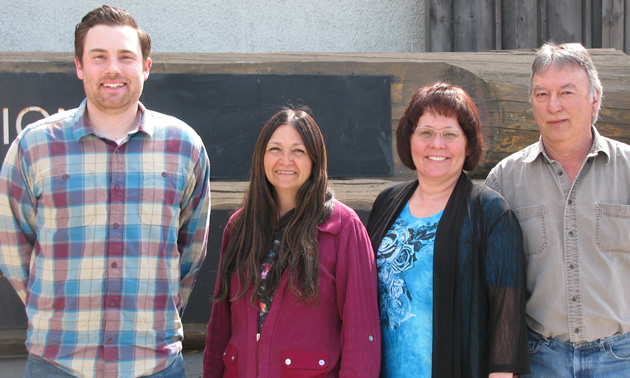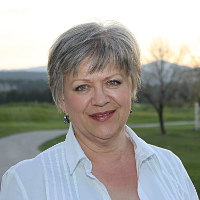Ktunaxa plan for the future
The Ktunaxa Nation Council considers land, traditions, economics, education and social issues in its multi-faceted planning

(L to R) Justin Paterson of Kootenay Aboriginal Business Development Agency with Rosemary Phillips, Marion Eunson and Bob Luke of the Ktunaxa Nation economic sector. — Marie Milner photo
Ktunaxa Amakis, commonly referred to as Ktunaxa Territory, covers 70,000 square kilometres within the Kootenay region in southeastern B.C. It is home to the Tobacco Plains Indian Band in the Grasmere area, the Aqam Band (formerly called the St. Mary’s) near Cranbrook, the Lower Kootenay Band near Creston and the Akisqnuk Band in the Windermere area.
Each band has its own chief and council looking after governance on the reserves—land set aside by the federal government at the time of Confederation for the use and benefit of the Indians (as per the language in the Indian Act of 1876). However, the Ktunaxa Amakis covers more than just the reserves.
The Ktunaxa Nation Council (KNC) is accountable to the chiefs and councils of the Ktunaxa Nation. Although its government is certainly different from the municipal model, in simplified terms we could think of the nation like the regional district and the municipalities.
“The Ktunaxa Nation would be the regional district and the bands would be the municipalities,” said Rosemary Phillips, acting economic sector director for the Ktunaxa Nation. “When we talk about the nation, we mean all of our citizens and territory. The word ‘tribe’ is used a lot in the U.S., and that means the same as ‘nation’ in this context.”
The KNC is the executive body for the nation, made up of the chiefs of the bands and the chairs of five sectors or primary areas of focus. These include a land sector, traditional knowledge and language sector, social sector, economic sector, and education and employment sector. A director and staff in each of these work to achieve the goals of that sector.
It is typical for First Nations to have female leadership—many of the First Nations on Canada’s west coast are matrilineal. Kathryn Teneese is the chair and spokesperson of the KNC, and Darrin Jamieson has recently been hired to the position of CAO, a senior position within the KNC.
Looking ahead
Phillips said that the Ktunaxa Nation Council’s structure is based upon its vision statement:
"Strong, healthy citizens and communities, speaking our languages and celebrating who we are and our history in our ancestral homelands, working together, managing our lands and resources, within a self-sufficient, self-governing Nation."
“The economic sector focuses on self-sufficiency, which means building and facilitating a strong economic base,” said Phillips. “Each band has a development corporation, as does the nation. The bands are taking on different ventures and initiatives, trying to build their own economic base. At the nation level, our job is to help facilitate that however we can, so that we’re not only creating wealth within the nation, we’re also creating all of the things that go along with a strong economy.”

The Aqam Trading and Convenience Store is situated on Mission Road, north of Cranbrook, B.C., across from the St. Eugene Mission Resort & Casino. — Shelley Collinson photo
To further the nation’s move toward self sufficiency, a Ktunaxa Nation chamber of commerce is in the development stages. Phillips said that she hopes it will be operating within the next fiscal year.
“We’re a member of the Cranbrook chamber,” she said, “and it’s great. But having our own chamber will allow our own businesses and other businesses that want to work with us to be more engaged, to get more information, to be better informed about what’s going on and what opportunities there are.
“This chamber will be for Ktunaxa Nation’s businesses and for anyone who wants to be part of the economy of the Ktunaxa Nation. One of the things we’re trying to move into is the energy sector, and we’re working to align ourselves with businesses that want to partner with us.
“Potential partners could come to the Ktunaxa Nation chamber to get connected with the right people here. A lot of industry people who we partner with could benefit from being part of a Ktunaxa chamber.”






Comments